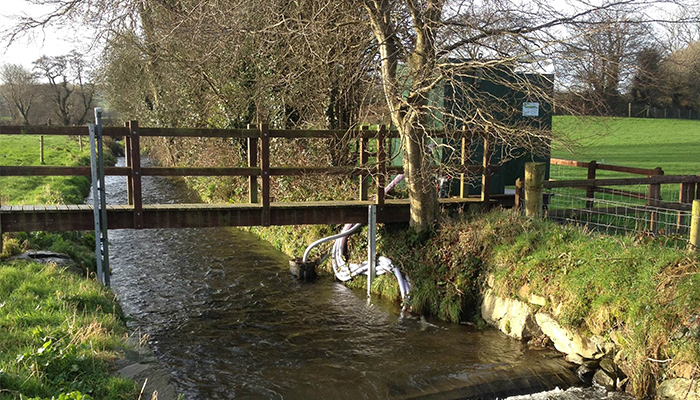25 March 2021
Pesticides and losses to water

What happens to pesticides after application? TEAGASC researchers have monitored the concentrations of commonly used herbicides in two agricultural river catchments as a part of the EU Horizon 2020-funded WaterProtect. Per-Erik Mellander, Catchment Scientist, has details of this on-going monitoring
Monitoring in the Agricultural Catchments Programme
Modern agriculture uses many agrochemicals such as pesticides, yet we know very little of what happens to pesticides following application. To address this knowledge gap TEAGASC researchers have monitored the concentrations of a suite of commonly used herbicides in two agricultural river catchments as a part of the EU Horizon 2020-funded WaterProtect. The monitoring is on-going within the Agricultural Catchments Programme and uses passive samplers for continuous monitoring of the rivers. These provide time weighted mean concentrations over 14-day periods. We combine this data with sub-hourly monitoring of water flow.
MCPA
One of the most commonly used pesticide in Ireland is the acid herbicide MCPA which is used to control rushes, and have recently been more frequently detected in water. This is not only reflecting a more frequent use but also that we are finding better methods to detect them in water. MCPA is highly soluble in water and does not stick to soil so it is easily lost to water. While it degrades quickly in the sun and open air, it and can be lost to water shortly after or during application by wind drift or by surface runoff if rain occurs. If MCPA reaches an environment with little oxygen it can be leached to groundwater with a slow transfer to rivers from belowground pathways and it can also be released from oxygen-poor environments such as stores in the sediments of the river beds.
The Findings
To identify suitable methods to mitigate the loss of herbicides to water we need more knowledge on when, where and how such compounds are lost. Even if the two monitored catchments were not areas associated with pollution of herbicides in water, there were detections in both rivers all year round. Herbicides were also detected in private drinking water wells indicating leaching of the compounds. In the rivers the concentrations peaked in summer, associated with application and low river flow during good weather conditions. But since herbicides were present in the river all year there were higher mass loads in the winter due to higher river flow. There appeared to have been a restricted degradation with a slow release from below surface and from sediments in the rivers.
In summary:
- Pesticides were present in the water of two agricultural catchments that are normally not associated with pesticide pollution
- The concentrations peaked in summer but pesticides were present in the river all year round resulting in higher mass loads in the winter
- Pesticides can be lost to water during or shortly after application, via wind drift or surface runoff, and can leach to groundwater with a slow transfer to rivers from belowground pathways and from sediments in the rivers.
In this short video below Per-Erik Mellander, Teagasc Catchment Scientist with the Agricultural Catchments Programme discusses pesticides and losses to water
More information can be found in:
Khan AK, Barros Costa F, Fenton O, Jordan P, Fennell C, Mellander P-E (2020). Using a multi-dimensional approach for catchment scale herbicide pollution assessments. Science of the Total Environment, 747, 141232.
More information on Water Quality Week is available here
For more information on protecting water quality visit the water quality section of the website here
